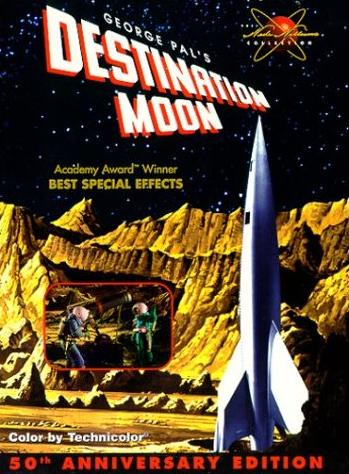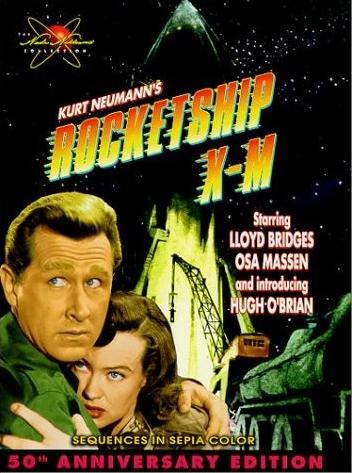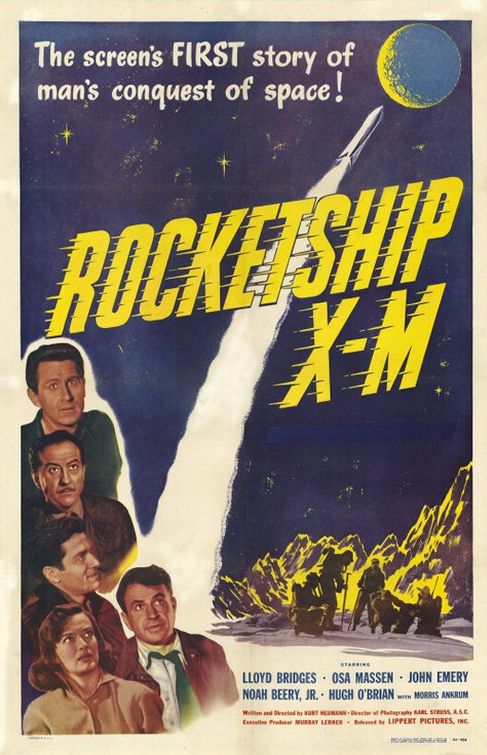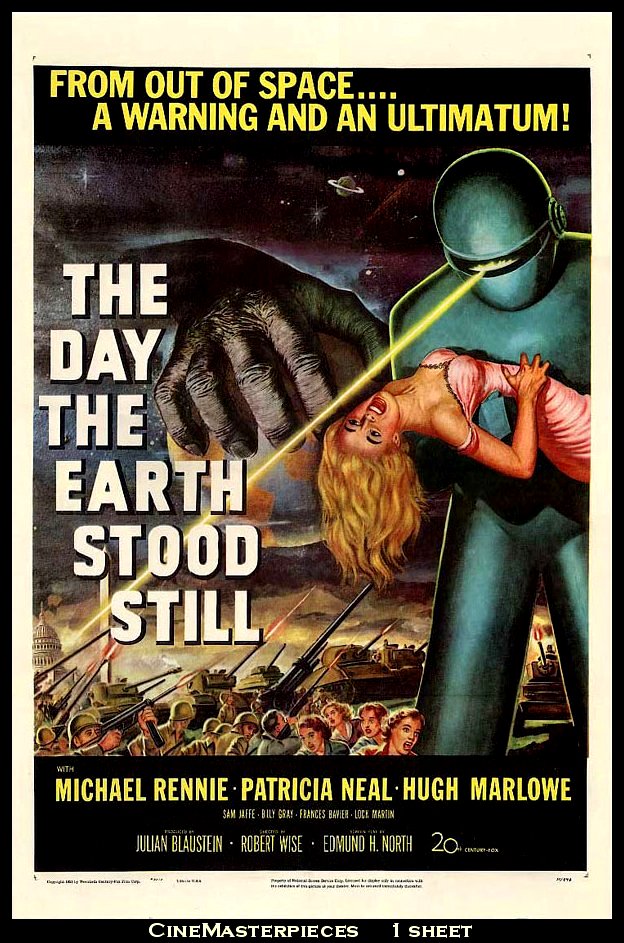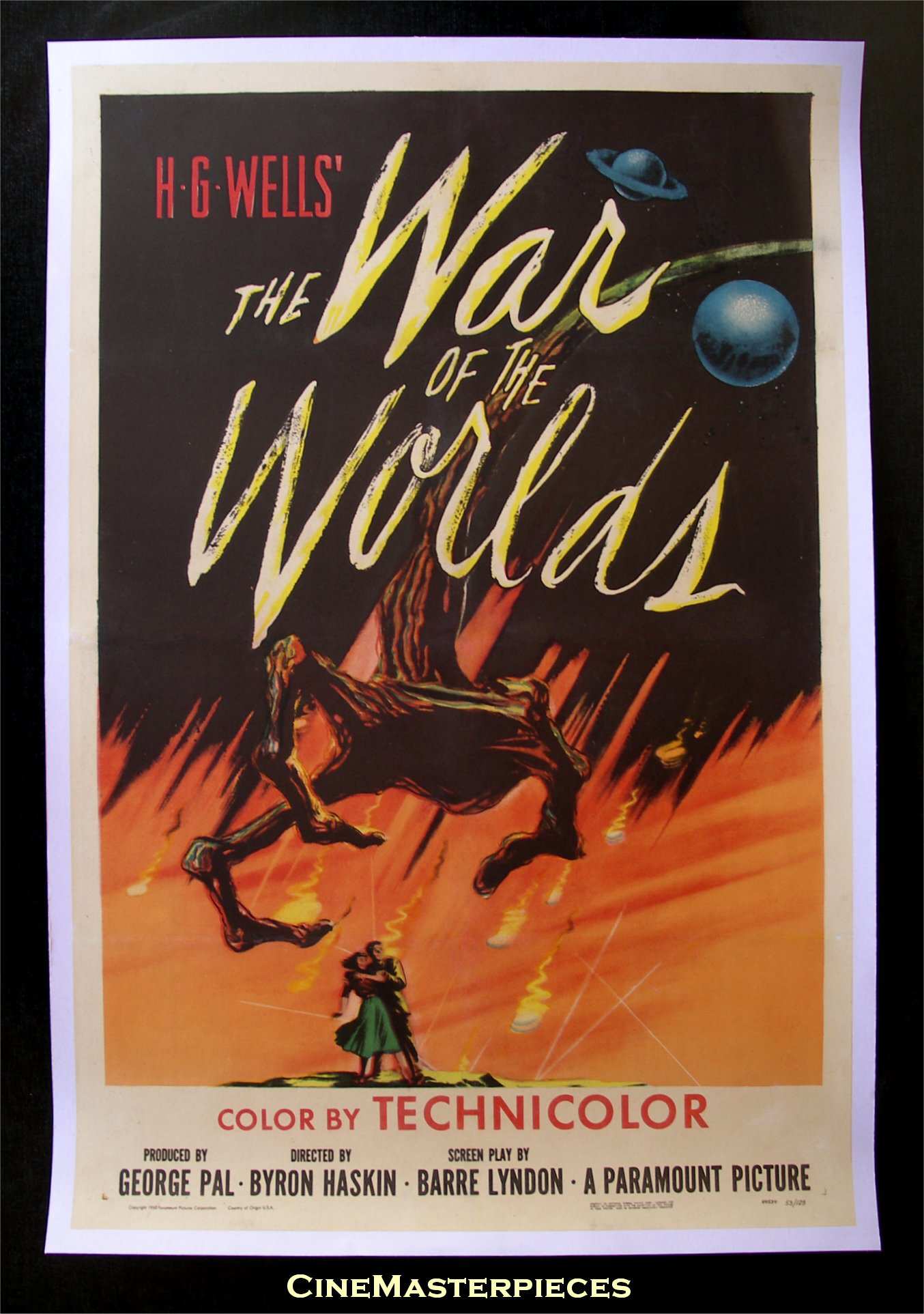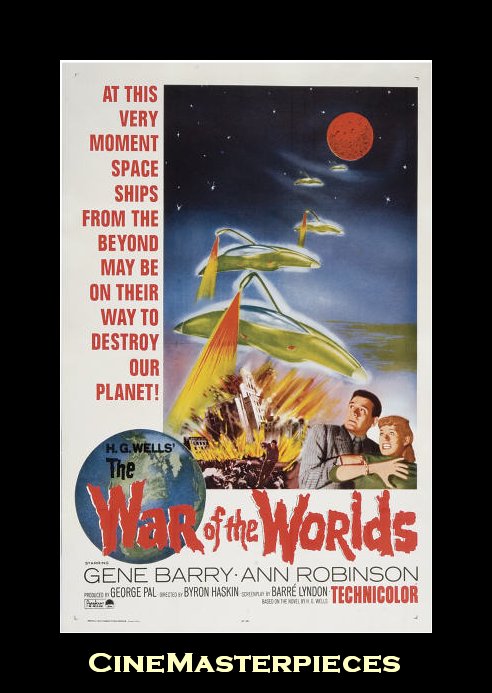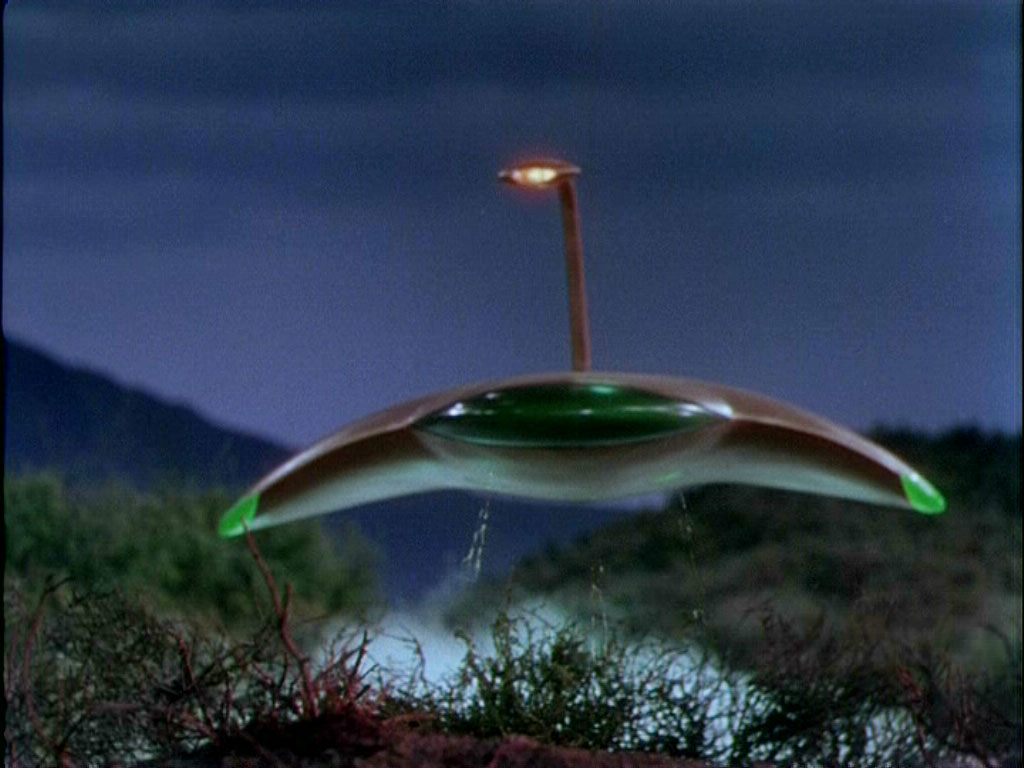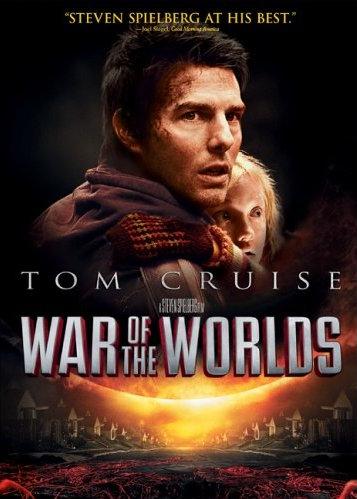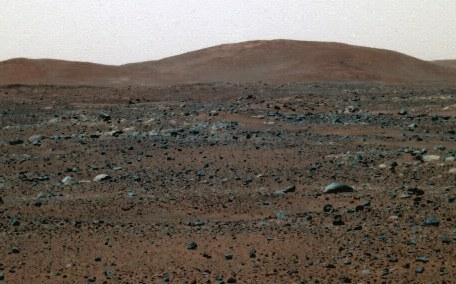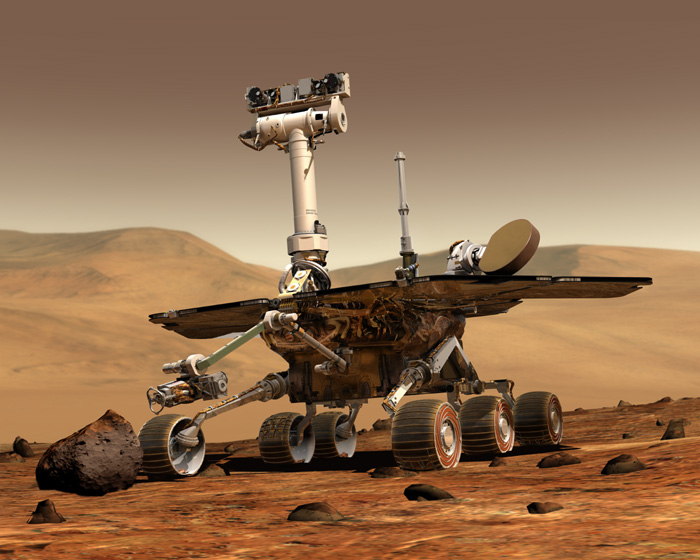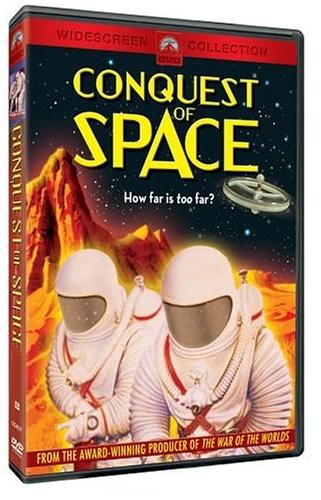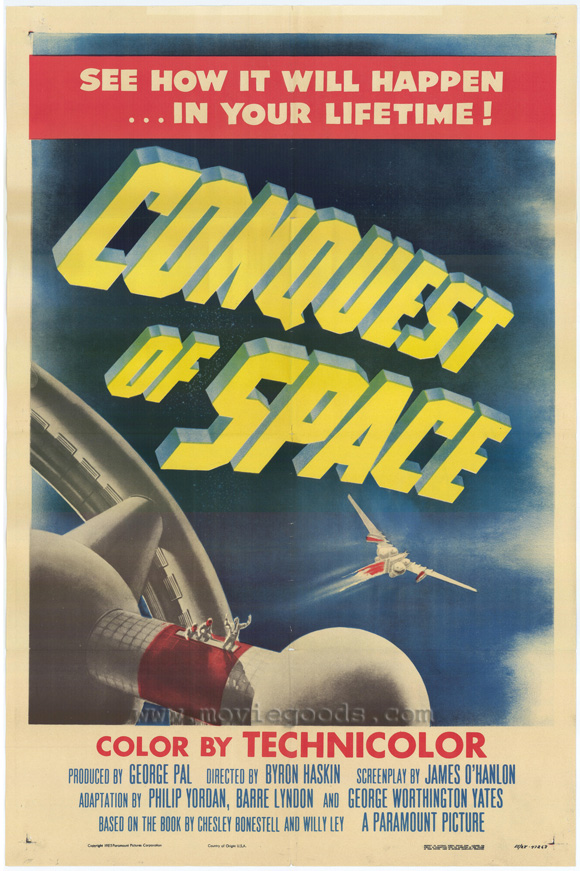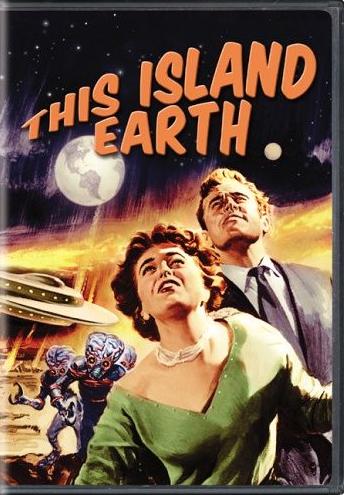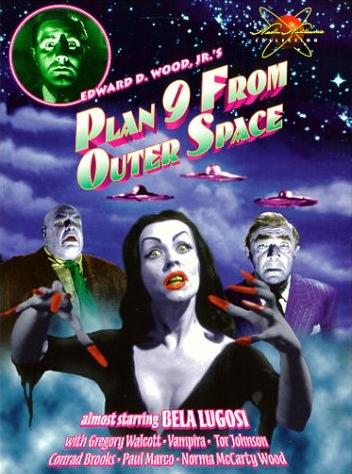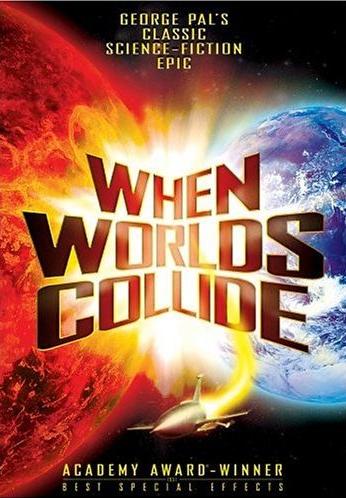The Space Age Turns 50 - Ideas of Space Flight from the Early 20th Century
1950s Popular Culture: Movies
The 1950s saw a huge number of movies based on space travel, flying saucers, and space aliens. These movies built on and added to the public's interest in real space travel. Some of these movies were surprisingly well thought out! Others... not so much!
The most insightful and thoughtful of these, in my opinion, is George Pal's 1950 Destination Moon. It describes a realistic journey to the moon.
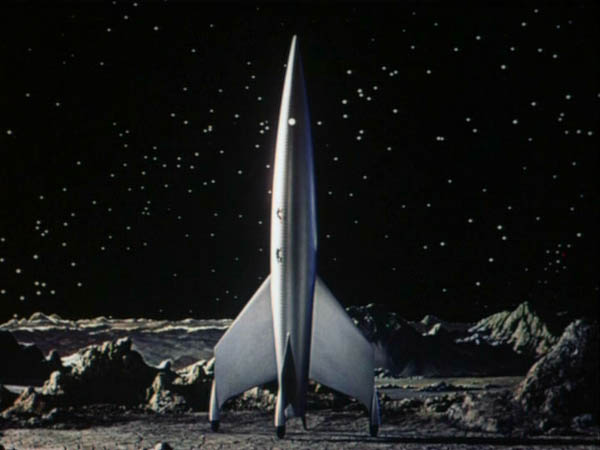
(from: http://www.cloudster.com/Sets&Vehicles/DestinationMoon/LunaTop.htm)
Influenced by the knowledge of the time, the spaceship looked very similar to a giant V-2.
The physics of the movie is basically correct. The art of Chesley Bonestell was used for many of the shots, especially for the long shots of the surface of the moon.
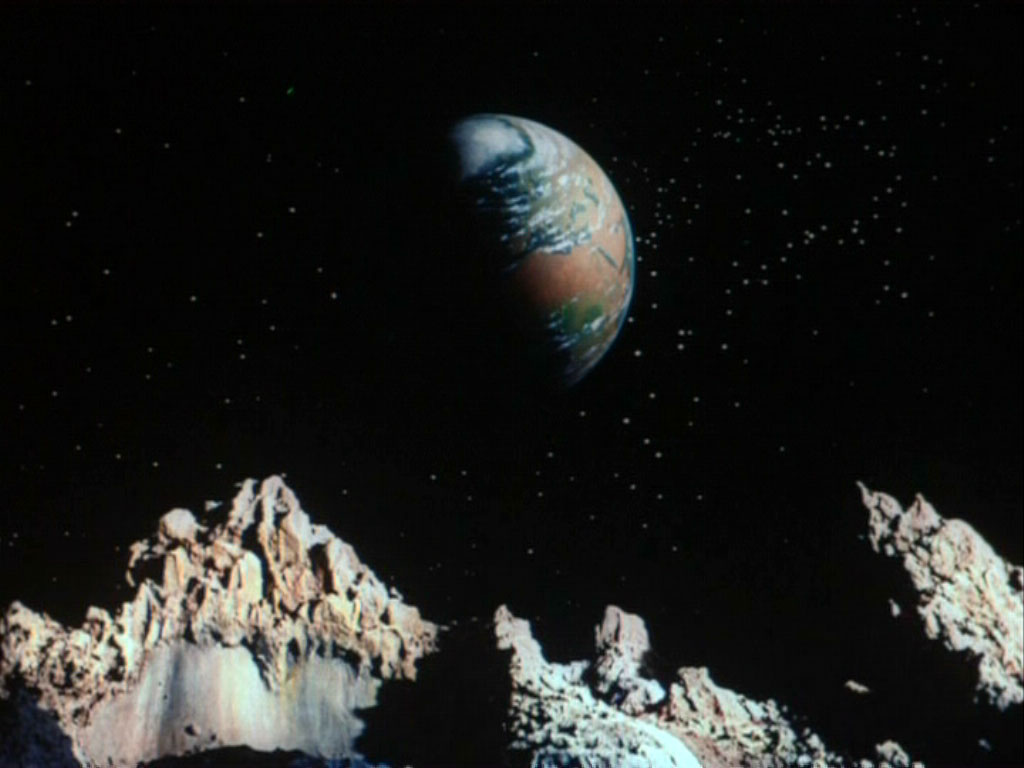
(from: http://www.cloudster.com/Sets&Vehicles/DestinationMoon/LunaTop.htm)
As an example of the good science in the movie, there is no sound in space because it is a vacuum - Destination Moon accurately reflects this, unlike the vast majority of space movies produced today.
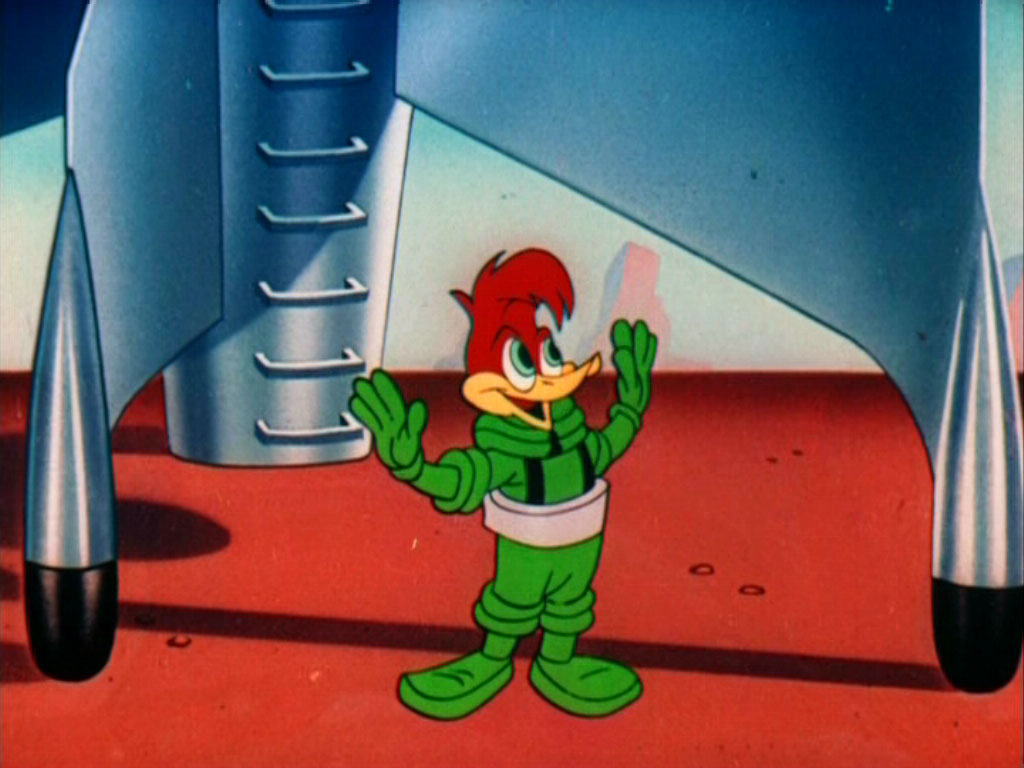
(from: http://www.cloudster.com/Sets&Vehicles/DestinationMoon/LunaTop.htm)
One interesting thing about the movie, is that it has a brief four minute lecture on physics and Newtonian mechanics. The producer's of the movie went for one of the top celebreties of the day to explain this material: Woody Woodpecker!
Whereas Destination Moon was a high-budget, well advertised film, Rocketship XM was lower budget and far less technically accurate. It involves a trip to the moon which goes astray and ends up at Mars. There is a human society on Mars, crew members are killed, and the ship returns to the Earth, only to crash, killing the pair of characters in the love substory which was common in 1950s science fiction.
One of the best of 1950s space genre science fiction, is The Day the Earth Stood Still. Though the movie makes use of a very human space alien and a human shaped robot, Gort, who arrives in a culturally-new "flying saucer," the orbital mechanics described by the character Professor Barnhardt are accurate, even though very technical! There is also an overall antiwar/peace sentiment to the film.
Paramount Pictures' 1953 War of the Worlds was the first big-screen adaptation of H.G. Wells book. Though not reflective of realistic space travel of the 1950s, the movie is a classic and certainly generated public interest in space and rocket travel.
The movie marks a continuing fascination with the planet Mars. We are here to commemorate an event of October 1957, but there was another relevant well-known event of another October.
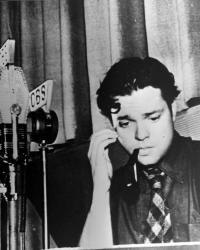
(from: http://www.mercurytheatre.info/)
Sixty-nine years ago on October 30, 1938 a young Orson Welles broadcast a radio-play of War of the Worlds, convincing a number of people that the events were real (and, incidentally, ending up testifying before irritated public officials).
Mars-mania today is as great as ever, with new movie versions of War of the Worlds still coming out, not to mention the extraordinary success of recent NASA probes to Mars.
The book by Willy Ley was made into a movie in 1955. The film-version of Conquest of Space was a story about a manned mission to Mars which was launched from a wheel-shaped space station. The technical details are not bad, at least when measured against the knowledge of Mars in the 1950s. The influence of von Braun's ideas as expressed in the Collier's magazine articles is clear.
The 1950s saw a proliferation of space related movies, some better than others; some with an educational component, and many that were just fun!
Go to Korolev, the R-7, and Sputnik section.
